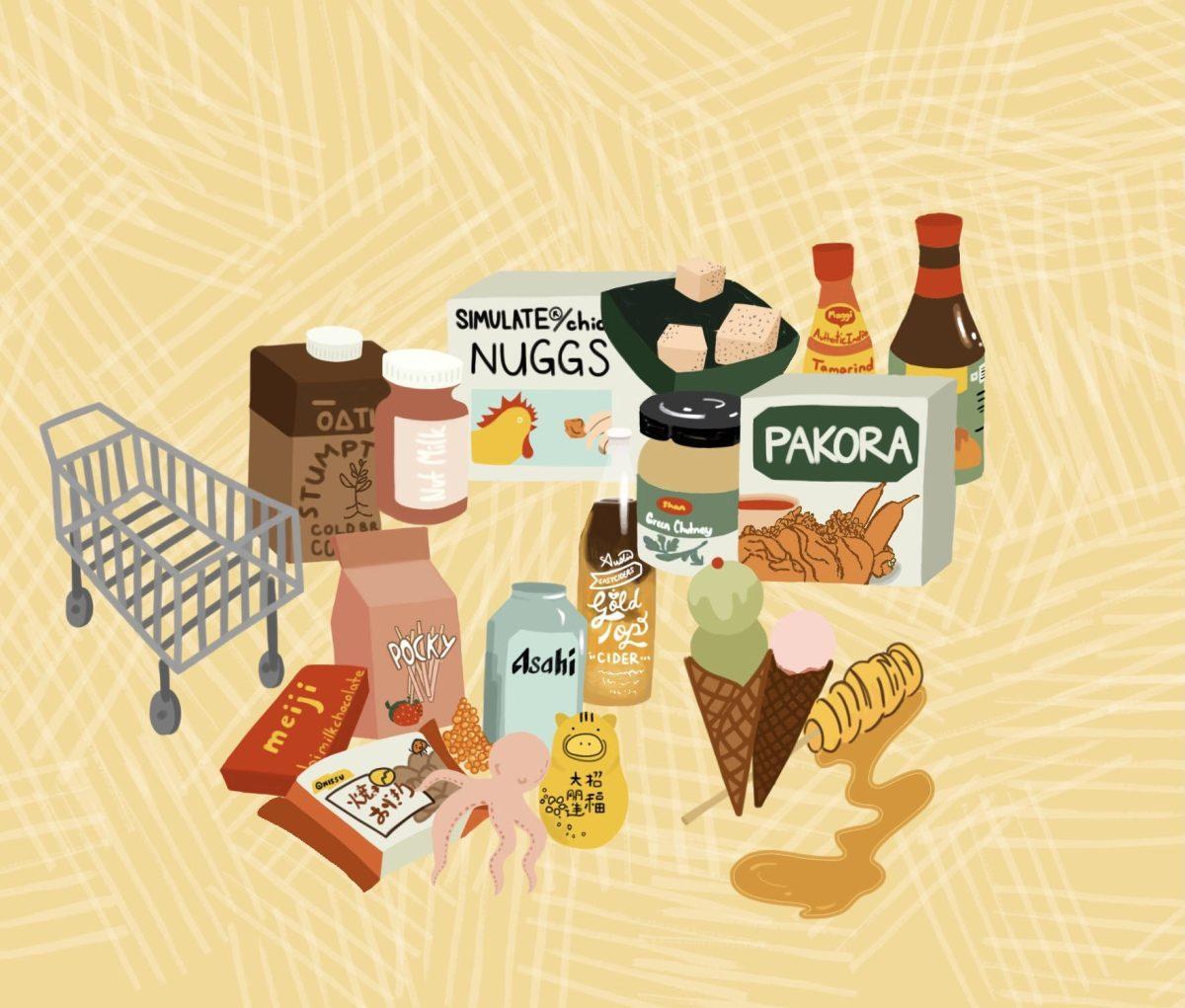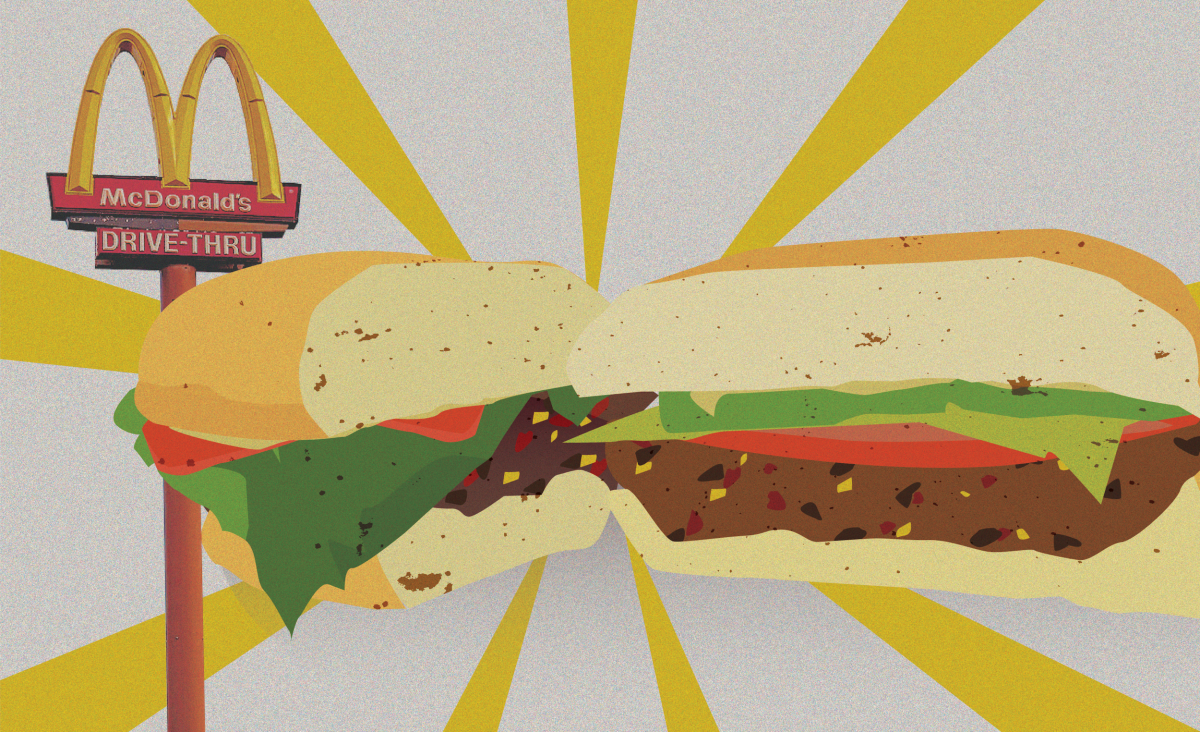As students living in a large metropolis, there are ample opportunities to go and try the variety of cuisines Austin has to offer. With eating out comes the cost of tipping. ORANGE delves into the topic of tipping culture and the new no-tipping trend implemented by restaurants across the nation.
Story by Nafisa Gazi
Illustrations by Madeleine Kaniewski
There’s a saying that goes: “You know who’s been in the service industry based on how they tip.” In America, the tipping system has cultivated varied hard and fast rules from individual to individual. Of course tipping exists in other countries, but the system is often not as elaborate as that of the United States. Many cultures see tipping as a form of gratitude for exceptional service or payment for a favor. However, if that belief system was brought to America, it could result in under-tipped employees, which further fuels the debate for tipping vs. no tipping.
A waiter could be having a bad day, slip up in their words, not appear friendly enough or simply not appeal to a particular customer’s tastes in appearance or attitude. As a result, the waiter could drop down to receiving a 5% tip or none at all. The reason that the 20% tipping standard exists at all is to compensate for the employees’ low income.
Many customers are under the false assumption that a waiter’s minimum wage is $7.50 an hour. However, a federal law implemented in 1993 states that tipped employees have a minimum wage of $2.13 per hour. Since then, the rate has not been accommodated for inflation, and large lobbyists like the National Restaurant Association (NRA) have lobbied $2.2 million in 2013 alone to keep the minimum wage at $2.13.
If the employee doesn’t make enough tips to earn the regular minimum wage of $7.50, then the employer is often mandated to make up for the difference. However, that doesn’t always happen. What results is wage theft, as the employee hands over their minimum wage of $2.13 to taxes and not making anything close to reflecting the extent of their labor. Waiting and hosting jobs hold an enormous amount of stress in regards to where their income will come from.
Enter the new wave of restaurants across America eliminating the tipping system. Big names like Joe’s Crab Shack and any of the 13 New York restaurants that Danny Meyer, CEO of Shake Shack, owns have all said goodbye to tipping. In Austin, local spots like Black Star Co-op and Thai Fresh have also followed their lead.
In general, these restaurants are able to still pay their employees a living wage by slightly increasing menu prices. This allows for employees to feel secure about what to expect out of their next paycheck.
For both proponents and critics of the tipping system, a common question is, “Why should I pay someone’s wage when it’s the responsibility of the employer?”
Although some employers want to pay a living wage, it is hard to combat the capitalistic notion that the price of the food accurately reflects the food’s value. Large scale farming sponsored by corporations competing for the largest profit margin have left us ignorant to the true costs of growing and processing food. As a result, when prices are raised, customers are left in shock. Many have become accustomed to inexpensive meals in the age of dollar menus.
Additionally, in order for employers to run a successful business, they have to make a profit. If they want to pay ethical, living wages to their workers, prices must be raised in order to accommodate for the cost of labor.
Jam Sanitchat of Thai Fresh understood the need for a living wage for her employees. Since January 2016, Thai Fresh completely eliminated tipping. When asked what prompted her to make the change eight years after opening, Sanitchat replied that she found the American tipping system strange. “As a person who’s from Thailand, I’ve travelled to many countries,” Sanitchat says, “I thought it was kind of strange, but the system is the system. You kind of don’t want to go against it.”
Sanitchat remembered her days in service where she would find herself consistently stressed working for tips. Over the years, she read of other restaurants who successfully managed to eliminate tips. “I kept reading about other people and thought, since I’m already open and running, how am I going to get this done? It was very likely that it could take my profit,” Sanitchat says.
However, after eliminating the tipping system, her employees are happier and often offer more ideas to further improve the restaurant. “So on the same clock, they’re serving and thinking for me to improve upon the project since there’s no stress. I’ve never gotten so many people willing to put so much work into the restaurant until now,” Sanitchat says.
She also reports 100% retention in the kitchen, which is a problem that many restaurant owners come across. The average hourly wage is $10 for kitchen workers, but with the rising cost of living and transportation, kitchen employees end up leaving because their wage isn’t enough to cover the cost of keeping the job. With a living wage comes a better work environment. There’s less animosity, as the kitchen staff are no longer excluded from tips that the waiting staff and hosts would receive.
Among some of the largest misconceptions that contribute to under-tipping and is the assumption that the tip is an extra cushion on top of the wage the worker is paid. As a result, tipping culture in America has given the customer the unfair power to determine a worker’s wage. “Regardless of how bad their service was, that person still brings you water, brings you food and buses your table,” Santichat explains. “You should really never not tip 20%.”
Sam Sutton, a University of Texas at Austin biology major, goes to Thai Fresh often. Sutton explained that while she was surprised by the increase in price, she appreciated the rationale behind it. “Once I kinda looked into the reasoning behind it and realized that it ensured the staff more of a guaranteed pay-check instead of having to depend on various tip amounts, I was completely okay with it.”
Currently, Thai Fresh has added benefits of paid maternity leave, paid vacation after a year of employment and health insurance. However, as long as the restaurant business is far from eliminating tipping from their system, consider the employee the next time you’re hovering over that Square reader or signing that receipt.












































